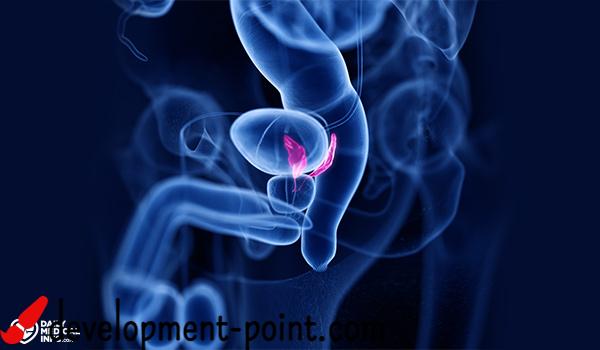What are the different parts of the stomach? And what are its functions?
The stomach is an essential organ in the digestive system of the human body, and below we will review its most important functions within the human body, in addition to knowing what diseases may affect it?
stomach anatomy
The stomach (in English Stomach) is a J-shaped organ that digests food, and the stomach is connected to a valve called the lower esophageal sphincter (located at the end of the esophagus) at its beginning, and the small intestine (duodenum) at its end.
The size of the stomach varies from person to person depending on when and how much food is eaten. It expands when it is full and contracts when it is empty.
The average stomach can hold about 6.8 liters of food and liquids, and the food is kept for only three to five hours, before it is passed along the digestive tract afterwards.
The location of the stomach in the human body
The stomach is located in the upper left part of the abdomen, below the liver and next to the spleen.
stomach parts
The five parts of the stomach include the following:
- Cardia: It is the upper part, and contains the cardiac sphincter, which prevents food from returning to the esophagus.
- Fundus: It is a round section next to the heart, located below the diaphragm.
- The body of the stomach (corpus): It is the largest part, and the stomach contracts to start mixing food.
- Laurel (antrum): This part is located at the bottom, and holds food until it is sent to the small intestine.
- Pylorus: It is the lower part, and this part includes the pyloric sphincter, which controls the timing and how the contents of the stomach pass into the small intestine.
In addition to the previous parts, it also contains several layers of muscle and other tissues, which include:
- Mucosa: It is the inner lining of the stomach. When the stomach is empty, small folds are formed inside it called (rugae). When the stomach is full, the mucous membrane expands and the folds (rugae) flatten.
- Submucosa: which contain connective tissue, blood vessels, lymph vessels, and nerve cells; Even covering and protecting the mucous membrane.
- Muscularis externa: It is the primary muscle in the stomach, and it has three layers that contract and relax; to break down food.
- Serosa: It is a layer of membrane that covers the stomach.
stomach function
Its main function is to store and break down the foods and liquids we consume, and then transport these contents to other organs; To absorb the nutrients from them, so the functions of the stomach include:
- Temporarily store food.
- systole and diastole; To mix and break up food.
- production of enzymes and acids (digestive juices); to break down food.
The enzymes and acids produced by the stomach include:
- Pepsin: It is a protein-digesting enzyme that is activated when food enters the stomach.
- Hydrochloric acid: It is a very strong acid that breaks down food and any other foreign matter, such as bacterial pathogens.
The stomach protects itself from secretions, by secreting something like mucus. Without this protection, the stomach would digest itself (autodigestion), which is a common cause of stomach ulcers.
What are the diseases that affect the stomach?
Because the chemicals in the stomach work in a delicate balance, many stomach problems and diseases can arise when this balance is disturbed. Some common stomach conditions include:
Stomach sensitivity
Also called a sensitive stomach, this non-medical term is used to describe an easily upset stomach. People with sensitive stomachs may experience frequent gas, bloating, or nausea and vomiting.
A person who has stomach sensitivity may be associated with certain foods or situations, while others may suffer from digestive disorders without ascertaining the cause.
Tips for maintaining a healthy stomach
- Drink an adequate amount of water on a daily basis.
- Eat enough fiber daily.
- Exercise regularly.
- Reducing the intake of processed foods.
- Manage stress through healthy practices, such as meditation.
- Reduce caffeine intake.
- Stop smoking or using tobacco products.
- Eat less food. Eating five or six small meals a day may be more comforting to the stomach than eating three large meals.
- Eat less quickly, and chew it well before swallowing. To avoid gas formation or indigestion.
Frequently Asked Questions
What is the appropriate term that describes the stomach?
The appropriate description and term to describe it is the organ of the stomach, as it is one of the organs of the digestive system.
What happens to your stomach acid when you swallow an antacid pill?
The antacid begins its effectiveness, and works to neutralize the acidity of the stomach, and thus the feeling of acidity decreases.
How do I know that the smell of mouth from the stomach?
If you know that you are sensitive to certain foods, you often arrange bad breath with stomach acid, or when you notice that the breath smells like ammonia, it may be due to a kidney infection or a chronic disease.
Is there a relationship between the stomach and high blood pressure?
Yes, in the case of an abdominal aortic aneurysm, a bulging aneurysm occurs in the blood vessels that extend from the heart to the lower chest and abdomen. This condition may become a health hazard if not treated quickly.
When does stomach germ die?
Stomach germ treatment may take weeks; To ensure that the germ is completely gone.

